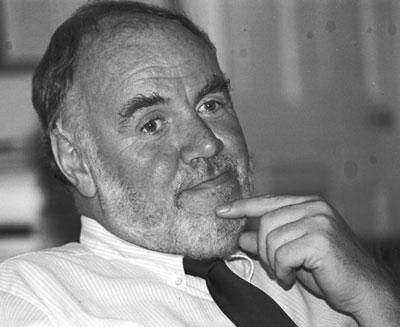IAN History
The faculty of the University of Maryland Center for Environmental Science (UMCES) have provided leadership in coastal and estuarine science since 1925. In 2000, UMCES faculty expanded their definition of scholarship to augment the discovery aspect of research with integration, application and teaching. As part of this expansion of scholarship, IAN was launched in 2002 to specifically address the integration and application of science.
IAN Initiation phase (2000-2004)
The IAN concept was formed in 2000 UMCES Strategic Plan. UMCES President Boesch presented the concept to the Maryland General Assembly and obtained operating funds to establish IAN. The position of Vice President for Science Application was created in 2001 and filled in 2002 by Dr. William Dennison. The IAN website was launched, and the first round of symbols were posted in a symbol library. IAN promoted the concept of a Chesapeake Bay report card, and established the EcoCheck partnership with NOAA at the Oxford Cooperative Laboratory. IAN initiated science communication courses and began published science communication products. IAN staff were accommodated at Horn Point Laboratory.
IAN Partnership phase (2005-2009)
IAN developed strategic partnerships with federal agencies (National Park Service & NOAA), international organizations (Land-Ocean Interactions in the Coastal Zone), educational programs (Center for Ocean Sciences Education Excellence, Erasmus Mundus). IAN Press was established with the publication of ‘Shifting Sands: Environmental and Cultural Change in the Maryland Coastal Bays’. The Annapolis Synthesis Center was established in historic downtown Annapolis and IAN staff were accommodated there and in a newly renovated building on the Horn Point campus.
IAN Engagement phase (2010-2014)
IAN increased partner engagement, focusing on the facilitation of scientific syntheses and development of ecosystem health report cards using indicators derived from stakeholder workshops. IAN co-produced a wide variety of science communication products with stakeholders. The Annapolis Synthesis Center for transformed into the National Socio-environmental Synthesis Center (SESYNC) and IAN staff were co-located in SESYNC.
IAN Globalization phase (2015-2019)
IAN expanded its global impact by partnering with the World Wildlife Fund to form the Healthy Rivers for All partnership. IAN also partnered with Future Earth Coasts to facilitate the dissemination of IAN approaches globally. IAN staff became more involved with graduate teaching and professional development courses, including creating an IAN graduate student program. IAN staff partnered with University of Maryland faculty to create the Environment & Society Foundation in the Marine Estuarine Environmental Science program.
IAN Leadership phase (2020-present)
IAN aspires to become a global leader in how to perform scientific syntheses, communicate science effectively, assess environmental status and productively engage stakeholders. IAN leadership will be expressed by developing Massive Open Online Courses (MOOCs) and Professional Certificates, publishing both science communication products and peer review publications, obtaining international funding (e.g., Belmont Forum), and actively participating in international conferences and workshops. IAN will continue to conduct projects in a wide diversity of countries on every inhabited continent.
Our name

Our name, Integration and Application Network, is partially derived from the four tenets of scholarship articulated in "Scholarship Revisited: Priorities of the Professoriate" (Boyer, 1990; Carnegie Foundation). In this influential book, the four tenets of academic scholarship are redefined as discovery, integration, application and teaching, replacing the more traditional research, teaching and service. IAN focuses on the scholarship of integration and application, which includes conducting integration and application activities as well as studying, teaching and publishing about these enterprises. The network component of IAN refers to the different agencies and institutions that comprise IAN—it is not a center or an institution, rather a distributed network of partners and collaborating entities. Another reason for the acronym IAN was to commemorate the charismatic scientist Dr. Ian Morris, who was the head of the University of Maryland Center for Environmental Science from 1981-1988. Ian was committed to conducting good science and making it relevant, so working for IAN (or Ian) is consistent with his vision.

